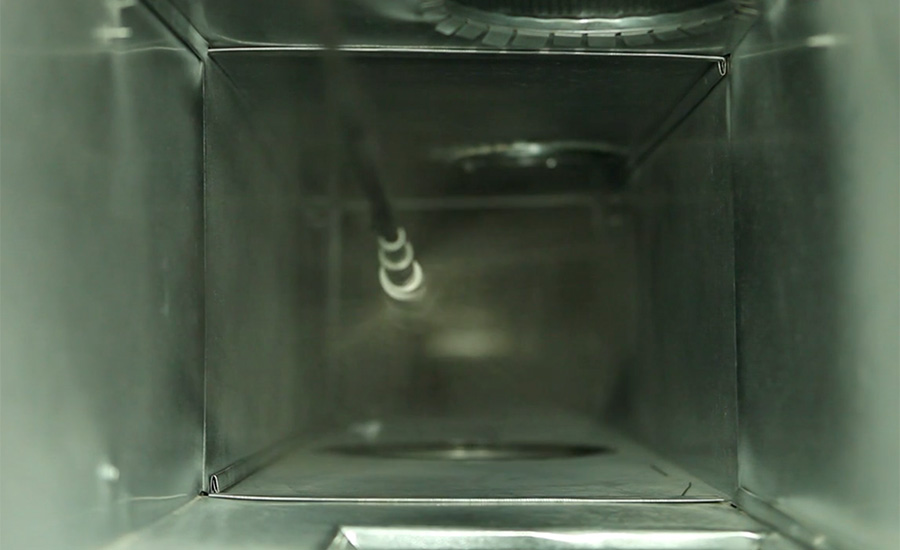Editor’s Note:
This R&R Q&A features a topic that’s gotten even more popular since the start of the COVID-19 pandemic: duct cleaning. Today, extensive cleaning and disinfection services often include the HVAC system, which has prompted some restoration contractors to add duct cleaning as an additional service. Consider this: it’s a scheduled, recurring income source as well! Jimmy Meyer from Meyer Machine & Supply stopped by to answer some of our HVAC cleaning questions!
1. Duct cleaning is a bit of a niche service for restoration contractors. What are some benefits to companies learning this service and offering it in-house rather than subbing it out? Or … is it better to sub it out to a true professional?
HVAC air duct cleaning is definitely a niche service, but not one restoration contractors should shy away from or be afraid of! The truth is HVAC air duct cleaning IS part of the building’s restoration process. While the acute cleaning techniques and tools for air ducts are different than drywall, concrete, furniture, or electronics; the principle result of source removal is the same. Restoration contractors inherently have the talent and demand at their fingertips to provide and operate an HVAC air duct cleaning service from within. The greatest benefits of providing this service in-house are scheduling flexibility, quality control, reducing competition exposure, and the financial benefit. Technicians can learn proper techniques for this business by participating in industry events like NADCA (National Air Duct Cleaners Association) or receive training from supply, tool, and equipment manufacturers.
Just like any business venture, just because there can be benefit to do something yourself doesn’t mean the benefit can’t be greater by having someone else handle it. There are plenty of qualified, professional HVAC cleaning companies keen on building lasting relationships with restoration contractors. If you’re able to find a reliable trade partner that allows you to focus on your core business practices, jump in with both feet!
Behind the Q&A

Jimmy is the President of Meyer Machine Supply & Equipment, and has been active with NADCA since 2005. He is the second-generation owner, and the company has been serving the air duct cleaning industry since 1992. Jimmy has served NADCA in many capacities since joining in 2011 including, but not limited to, the NADCA Board of Directors, task forces, and NADCA committees. Jimmy has held the NADCA ASCS/VSMR certification since 2006, completed a Masters of Business Administration from North Park University, Chicago in 2009, and holds a Computer Science Bachelor’s Degree. In his free time, Jimmy is very family-oriented and prefers to spend time outdoors with his wife and boys.
2. What are the must-have tools for duct cleaning after a structure fire?
Cleaning HVAC air ducts after a structure fire can leave a variety of materials inside the ducts, not to mention that the ducts might be damaged from the fire. Of all the hundreds of air duct cleaning tools available, the most important after a fire are rotating brushes, contact vacuums (with brush heads), and HEPA-filtered vacuum collectors. The residues left on the duct surfaces after a fire are often sticky or oily, and require a cleaning technique that sweeps the surface to remove the debris. Rotating duct brushes and brush-head contact vacuums are extremely effective for this technique and are generally applicable to use on a variety of duct surface types. Strong HEPA-filtered vacuum collectors are a necessity due to the material being removed from the duct work, and the appropriate time of the air duct cleaning. Considering that HVAC air duct cleaning is usually one of the last trades of a building restoration following a fire, containment and filtration are the only measures to keep the air duct cleaning contractor (and process) from decontaminating the entire building.
3. What are the benefits of duct cleaning after a fire? And likewise, what are some of the risks restorers take if they don’t clean the ducts, or don’t do it properly?
Fires stink. The most noticeable benefit of an HVAC air duct cleaning after a fire would be to remove and/or encapsulate the particles that cause foul odors from a fire. On the topic of IAQ and building occupant health, HVAC air duct cleaning helps to remove the contaminants and possibly carcinogens that are biproducts of a structure fire.
Providing improper HVAC air duct cleaning after a structure fire has the potential to leave the building in a worse state than if the cleaning had not taken place. Improper attention given to HVAC components, duct integrity, and cleanliness verification can have detrimental effects on the system. Heat and fires inside duct work can fail the air-side surface of flexible and insulated duct work; these surface membranes can flake or delaminate into the airstream causing blockages to airflow and/or heat exchangers. Talking about extremes, delaminated materials can pose the threat of fire inside downstream components like VAV-Boxes or or Re-Heat Coils.
4. What other restoration and remediation jobs should include duct cleaning?
Any restoration and remediation job that involves airborne contaminants should consider HVAC air duct cleaning for the scope of the project. The HVAC system is specifically designed to propagate FRESH and STALE air throughout the building so that it can be conditioned, exhausted, and supplied back to the building’s occupants. Any time there is an uncontrolled breach of the HVAC system or unwanted particles are introduced into the system (mold, mildew, water, sewage), the system MUST be cleaned/restored/remediated.
5. What needs to be done between jobs to avoid cross-contamination with the equipment from site to site?
We’re all in cleaning industry, and we need to give our customers the respect of bringing in clean equipment. Industry best practices suggest cleaning the interior and exterior surfaces of equipment that will be brought into the building/jobsite. Removal/replacement of filters in vacuum collectors and air scrubbers should be done between jobs, off-site, unless excessive loads require mid-job filter changes. In short, don’t bring the dirt from the Smith’s home into the Jones’ home.
6. Let’s have a little fun! What is the craziest thing you’ve heard of a contractor finding in duct work?
The fun contraband is typically found in residential ductwork; for some reason commercial buildings don’t contain ductwork treasures. There’s been a great variety of finds over the years: cats (alive), snakes (dead & alive), mice (dead & alive), cash, drugs, the list goes on. However, what I consider to be the greatest find I saw posted on a message board recently: Mickey Mantle Rookie Card. I heard it was turned back in to the homeowner, though I’m sure it took a strong conscience to do it.

